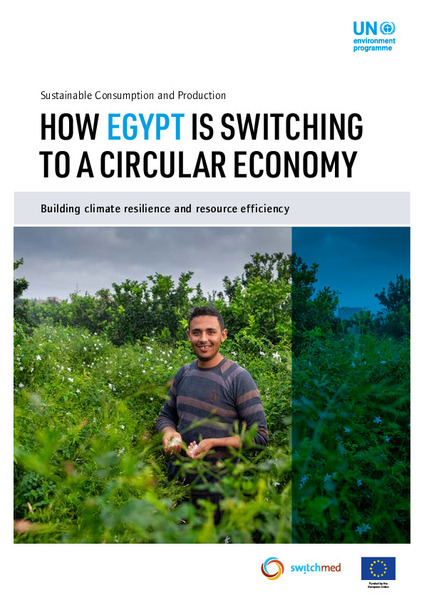| dc.contributor | Industry and Economy Division | en_US |
| dc.contributor.author | United Nations Environment Programme | en_US |
| dc.contributor.other | Reuter, Luc | en_US |
| dc.contributor.other | Chang, Yan | en_US |
| dc.coverage.spatial | Egypt | en_US |
| dc.date.accessioned | 2023-11-01T16:41:20Z | |
| dc.date.available | 2023-11-01T16:41:20Z | |
| dc.date.issued | 2023-11 | |
| dc.identifier.isbn | 978-92-807-4084-4 | en_US |
| dc.identifier.other | DTI/2575/NA | en_US |
| dc.identifier.uri | https://wedocs.unep.org/20.500.11822/43850 | |
| dc.description | Egypt’s NAP was based upon its 2013 Green Economy Scoping Study, which assessed the potential for a transition to a green and more
sustainable economy. The NAP is considered a significant milestone on the road to integrating sustainability into key economic sectors.
The plan aims to achieve SCP by promoting the efficient allocation and use of water and energy, sustainable agriculture and waste
management, with a focus on waste reduction, recover, re-use and recycling. | en_US |
| dc.format | pdf | en_US |
| dc.language | English | en_US |
| dc.relation.ispartof | SwitchMed | en_US |
| dc.rights | Public | en_US |
| dc.subject | sustainable consumption | en_US |
| dc.subject | sustainable production | en_US |
| dc.subject | waste management | en_US |
| dc.subject | subsidy | en_US |
| dc.subject | public procurement | en_US |
| dc.subject | plastic waste | en_US |
| dc.subject | ecotourism | en_US |
| dc.subject | recycling | en_US |
| dc.subject | water management | en_US |
| dc.subject | Egypt | en_US |
| dc.title | How Egypt is Switching to a Circular Economy: Building climate resilience and resource efficiency | en_US |
| dc.type | Publications | en_US |
| dc.type | Project Reports | en_US |
| wd.identifier.sdg | SDG 3 - Good Health and Well-Being | en_US |
| wd.identifier.sdg | SDG 12 - Responsible Consumption and Production | en_US |
| wd.topics | Finance and Economic Transformations | en_US |
| wd.identifier.pagesnumber | 15 p. | en_US |
| wd.identifier.doi | https://doi.org/10.59117/20.500.11822/43850 | |


